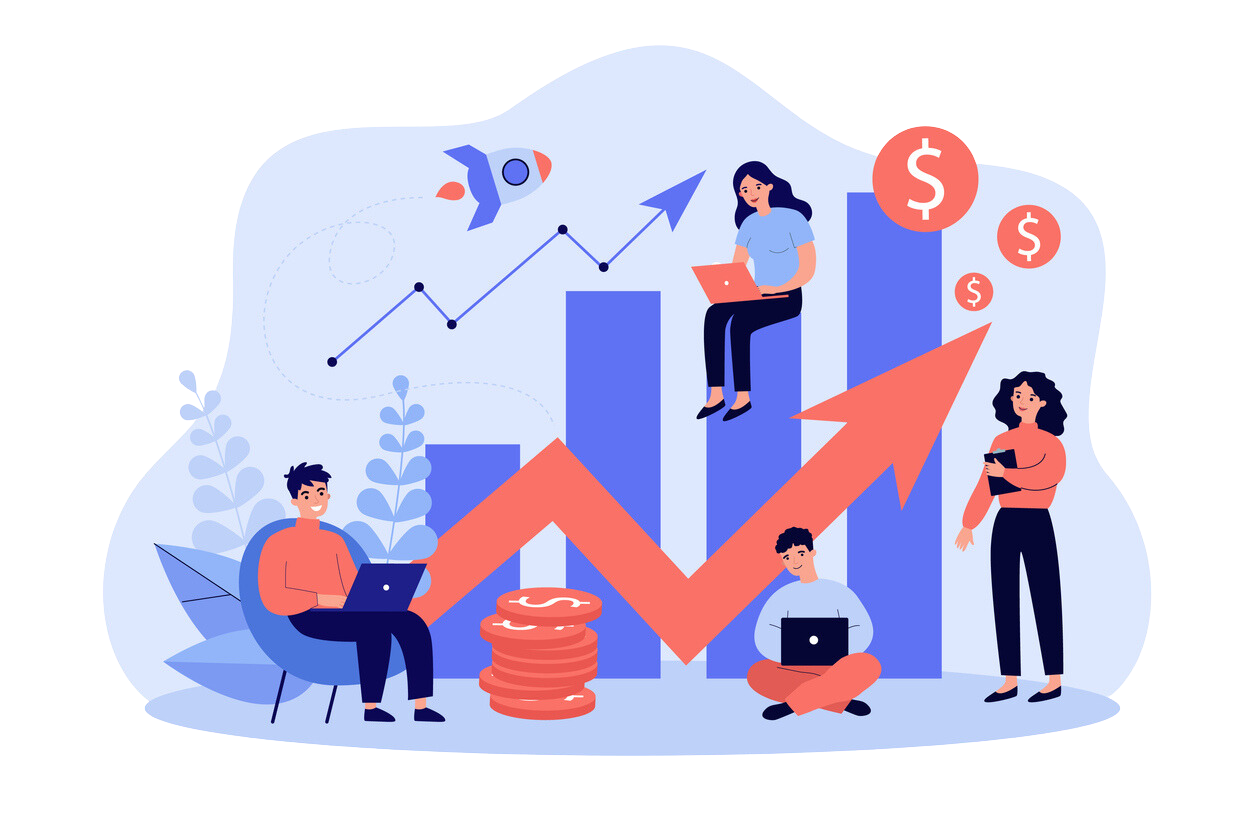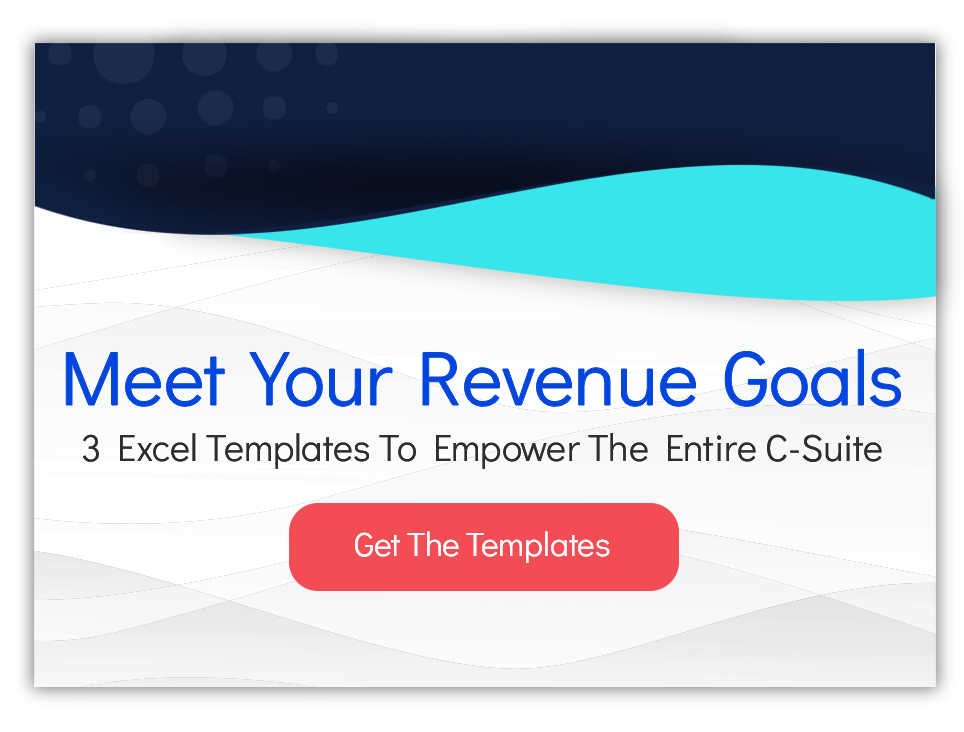Table of Contents
In a time when business software is undergoing a rapid transformation, adaptation and innovation have become the cornerstones of success. The introduction of AI was a make-or-break moment, opening doors to unprecedented opportunities while also shattering outdated approaches. In the B2B SaaS realm, it defined those who sank and those who swam.
We're going to cover the intricacies of B2B SaaS and how some of these companies are rising above while others are struggling to stay afloat. Our list of the fastest-growing B2B saas companies sheds light on what they're doing right and the useful strategies they use to stay there.
What is B2B SaaS?
B2B SaaS stands for business-to-business software-as-a-service. It's an industry-wide term used for cloud-based software that businesses use to operate and stay efficient. B2B refers to the sales process, meaning the SaaS company's sales team is selling to other businesses rather than consumers.
What is a B2B SaaS Company?
A business that provides useful software to other businesses through an internet connection rather than through downloaded, licensed software. They're in every industry from accounting to project management to SaaS B2B sales. It's worth differentiating because SaaS can be accessed from any device at any time with no lengthy installation, updates, and high up-front costs.
The beauty of cloud-based software?
- Continuous updates require no new installation or waiting periods
- Subscription-based payments mean predictable costs and short-term commitment
- External hosting means businesses can scale as they please
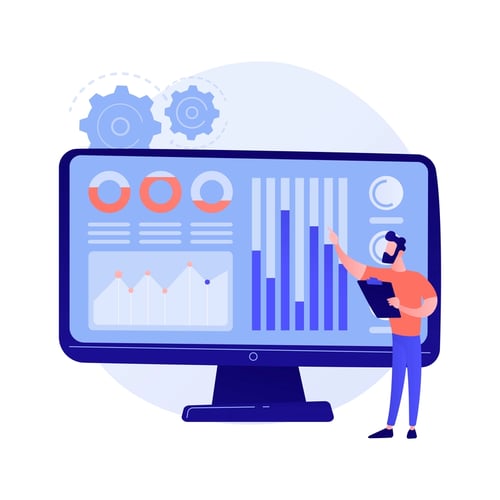
With the industry taking a big hit since the onset of the AI revolution, B2B SaaS marketing strategies are evolving to overcome new challenges and competitive pressures. Now that you understand the B2B SaaS meaning, let's explore what the future of B2B looks like.
B2B SaaS vs. B2C SaaS
B2B SaaS products are used by businesses, and B2C SaaS products are used by end users or individual consumers (B2C = business-to-consumer).
Take HubSpot, for example. They offer software with inbound and outbound marketing products for businesses to attract their audiences. Spotify, on the other hand, is a B2C SaaS company. Their music app is sold to consumers for personal enjoyment.
B2B and B2C are both typically paid in monthly subscriptions, but their marketing and customer engagement strategies are totally different.
Evolution of B2B SaaS
In the 1960s, rudimentary time-sharing systems laid the groundwork for cloud computing and SaaS. As computers became more affordable and employees no longer shared computers, the old hub-and-spoke system was put to rest. Local Area Networks (LANs) where data is stored on a central system became popular. The issue of in-house data storage paved the way for offsite, cloud-based solutions, and Salesforce pioneered the concept of cloud-based customer relationship management (CRM) in 1999.
The mid-2000s witnessed the emergence of Platform-as-a-Service (PaaS), and today B2B SaaS platforms are the norm in business operations. The ecosystem has diversified, offering countless specialized solutions like enhanced security, scalability, and accessibility.
Current B2B SaaS Market
The B2B Saas software is expected to reach 232 billion USD by the start of 2024. No one can deny that this number is massive, but it's worth noting that growth has slowed significantly since June 2022. August 2023's industry growth rate was 7.6% - minor compared to 2021-2022 which saw growth rates up to 79% month over month.
Long-time SaaS teams have said that the crazy booms in 2020-2022 were due to special circumstances - a perfect storm. Recent slowdowns aren't a sign of the end, just a return to normal.
Key Characteristics of B2B SaaS Solutions
User Authentication & Authorization: To ensure data security, SaaS companies provide robust user authentication systems including secure logins, user role assignment, and permissions management. 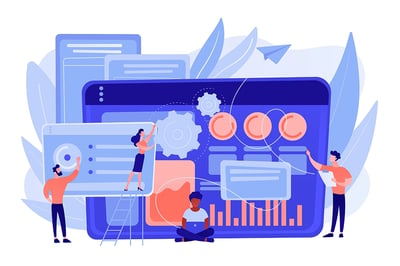
User Interface (UI)/User Experience(UX): User-friendly interfaces and intuitive user experiences are of top importance to Saas teams. They typically feature customizable dashboards, efficient navigation, and responsive design to enhance usability.
Database: Fundamental to the concept of SaaS is the ability to store, secure, and manage data such as user information, transaction records, and application data.
API Integration: Seamless facilitation with other applications is a major selling point for a B2B SaaS company. These include payment gateways, CRMs, and website hosting systems.
Scalability: Saas can handle user growth and increased requests while maintaining performance integrity.
Analytics/Reporting: Built-in analytics and reporting tools allow users to gain insights and track performance often.
Subscription Management: Easy subscription upgrades, downgrades, and cancellations ensure flexibility and customer satisfaction.
Customer Support: Because subscriptions can be ended at any time, customer support must be competitive. FAQs, live chat, email support, and phone assistance to address user inquiries are timely and helpful.
2023/2024 B2B SaaS Business Model
There are two main B2B SaaS business models with several branches stemming from each.
1. Subscription-Based Model: These models charge flat fees each month or year.
Benefits: Budgeting and forecasting are easy for the B2B SaaS platform and the buyer. Tailored subscription packages provide the maximum value for the most accurate price.
Possible Setbacks: Customers may expect unlimited access to features that they're paying a fixed price for.
2. Free-mium Model: The free-mium model provides a basic level of service with optional add-ons and advanced features for a fee.
Benefits: Prospective users can 'try before they buy,' which attracts many new customers if they find that the paid version will be useful.
Possible Setbacks: Converting users into paying customers is a hurdle. It can also be difficult to accurately bundle free versus paid features according to value and customer experience.
2023 B2B SaaS Challenges
As the demand for SaaS soars, it's clear that this transformative industry is here to stay. But with the recent surges in popularity comes a new set of challenges, many of which are shocks to startups that only know the SaaS arena in its golden age.
The next sections will discuss the challenges and solutions faced by B2B SaaS companies followed by how the top players have maintained their competitive edge.
High Customer Acquisition Cost (CAC)
Marketing Expenses: Many B2B SaaS marketing efforts have low or hard-to-measure ROI. At Proper Expression, we're willing to take direct responsibility for revenue impact, something most agencies aren't willing to do.
Sales Team Investment: Investing in recruitment, training, salaries, commissions, and CRM systems for sales teams is a huge initial financial outlay that strains resources, particularly for startups.
Extended ROI Timeline: For growth's sake, companies often take hits for years before seeing substantial ROI. Recent slowdowns are only extending those timelines.
Inefficient Targeting: In new industries, accurate prospect targeting hasn't been perfected. When leads don't convert, ROI drops even more.
Long Sales Cycles
Too many cooks: The involvement of numerous decision-makers can result in protracted decision times as consensus is sought and priorities are aligned.
Offer Complexity: B2B SaaS sales often involve comprehensive demos, trials, and customer training to showcase the value and functionality of the product. These extensive steps, while necessary, add considerable time to the sales cycle.
Contract Discussions: Legal, financial, and compliance teams may need to hammer out terms and conditions, leading to delays in signing agreements.
Budget Cycles: Many businesses operate on fiscal year or quarterly budgets, stalling purchases until the next cycle.
High Churn Rates
Market Fit: Because cloud-based software requires less commitment, customers are likely to churn if the solution doesn't meet their needs as expected. This comes back to accurate lead targeting and customer training.
Customer Support: B2B software teams need responsive support, timely issue resolution, and effective communication to stay competitive and retain customers.
Competition: If a SaaS B2B company fails to innovate and stay ahead of the competition, customers may be enticed by competing offerings.
No Improvement: Stagnation is the enemy of SaaS companies. Customers will seek newer solutions if they perceive theirs as outdated.
Competitive Market
Saturation: Customers struggle to determine distinctions among so many offerings, leading to paralysis by analysis and heightened competition for market share.
Tech Advancement: A SaaS B2B company that fails to adapt quickly can risk becoming obsolete. Emerging technologies and shifting customer expectations can render their solutions outdated.
Price Wars: The competitive arena leads to price wars that benefit customers but erode profit margins.
Brand Loyalty: Established companies have the advantage of existing brand loyalty. New entrants need to "wow" customers to get them to leave a brand they trust.
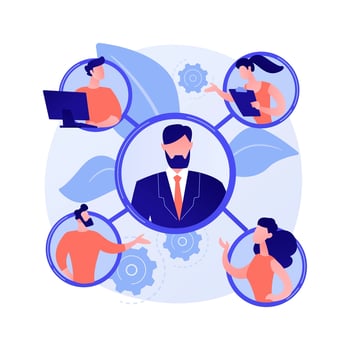
Trouble Scaling
Overloaded Infrastructure: Rapid user growth is great, but when it happens too fast, it can strain a company's ill-prepared infrastructure. Performance issues jeopardize customer satisfaction and company reputation.
Talent Acquisition: Fast expansion can lead to hasty hiring decisions. Unqualified team members may not contribute effectively to growth and innovation.
Heavy Operations: A surge in users also brings an influx of feedback and support tickets. Managing the increased operational workload can be challenging without a streamlined process.
Financial Management: Balancing cash flow while investing to scale is no easy feat. Managing a positive cash flow during expansion periods often requires seeking outside investments.
How B2B SaaS Startups & Giants Can Ensure Continued Success
Success in this landscape hinges on several dynamic factors. These include positioning your offerings effectively, maintaining a revenue-centric focus, implementing diverse and adaptive strategies, and enlisting the support of a full stack marketing agency that's not only growth-oriented but also aligned with your revenue goals.
This section explores how a SaaS B2B company, regardless of size, can navigate these waters to stay competitive in an ever-changing market. As a B2B SaaS marketing agency, it's our job to know what's working and what's on its way out.
Demand Generation
Objective: Create awareness, interest, and demand for your B2B SaaS platform solutions among the defined target audience.
Tactics: Content marketing, SEO optimization, email marketing, social media campaigns, webinars, paid advertising, and more. Creating a multi-channel approach finds customers more quickly and moves them down the sales funnel.
Analytics: KPIs include website traffic, conversion rates, and cost per acquisition.
Nature: Starting with a broad approach to create brand visibility about specific B2B SaaS solutions, companies can narrow down their tactics to match the interests of their target audience at each stage of the buying journey.
Working with a demand generation agency that gets the right traffic (not just any traffic) is the key to finding customers that convert.
Lead Generation
Objective: The primary goal is to identify and nurture potential customers who have shown interest. Converting these prospects into qualified leads moves them closer to a purchase decision.
Tactics: Lead generation strategies are more targeted and personalized than demand generation. This could be in the form of gated content (eBooks and whitepapers), webinars, free trials, email marketing, or lead capture forms.
Analytics: Success is assessed through metrics like the number of leads generated, lead quality, and conversion rates.
Nature: Once customers are identified, the sales funnel becomes increasingly more personalized with tailored designs to address their specific situation.
Finding a lead generation agency with B2B SaaS company experience allows companies to leverage time-tested approaches that truly weed out bad leads.
RevOps
Objective: The goal of Revenue Operations (RevOps) in this context is to align marketing, sales, and customer success teams for a unified and customer-centric approach while increasing revenue growth.
Tactics: Tactics include standardizing processes, creating shared metrics and KPIs, and implementing automated marketing techniques, all to increase efficiency and drive revenue up.
Analytics: Critical metrics include CAC, customer lifetime value (CLV), lead-to-customer conversion rates, sales cycle duration, and churn rates.
Nature: RevOps takes a broad approach, focusing on the end-to-end customer journey rather than isolated stages. It emphasizes a holistic view of the customer, spanning marketing, sales, and customer success, and ensures that the entire organization is aligned toward revenue growth.
There are specialized teams that focus solely on B2B SaaS marketing and RevOps. Partnering with a revenue marketing agency can make the growth process much smoother and avoid departmental silos.
Sales Optimization
Objective: Sales optimization aims to improve conversion rates, reduce sales cycle durations, and maximize the overall impact of the sales team.
Tactics: Automating routine tasks with sales technology, improving lead qualification processes, refining CRMs, and providing ongoing training and development for sales teams empowers reps to be more effective.
Analytics: Sales KPIs, along with those mentioned above, include average deal size, sales cycle duration, and sales team productivity.
Nature: Approaches are specific when targeting particular sales processes or challenges, and broad when optimizing an entire sales operation. It should be adaptable to each B2B SaaS platform.
With the help of a sales optimization agency, sales teams can effectively sell their B2B SaaS solutions and provide a higher level of customer service and expertise.
Fastest-Growing B2B SaaS Companies in 2023
To this point, we've covered the challenges B2B SaaS software companies face and what they can focus on to help secure their futures. In order of highest revenue, the following 13 B2B SaaS examples have thrived by employing the strategies described above; strategies perfected by our full stack growth marketing team.
CharterUp
CharterUp provides safe and accessible group transportation through a user-friendly interface. Schools, churches, and large companies use its B2B SaaS products to transport employees, students, or group members on their trips. Its staggering 3-year growth rate of 111,130% earned them their spot on top of the B2B Saas companies list.
- Revenue 2023: $150 million
- 3 Year Growth: 111,130%
- Employees: 180
- HQ: Austin, Texas
- Established: 2018
- Industry: Transportation
- Reputation: 4.4/5
- Pros: Punctual and friendly service, user-friendly interface
- Cons: Last-minute cancellations due to an insufficient network
LiveShopper Sassie
LiveShopper Sassie is a market research tool that helps clients improve customer experiences. Restaurants, hotels, and retail stores can track customer satisfaction and capture valuable insights easier than ever. Its listed on Inc.com's 5000 honoree list with a 37,386% 3-year growth.
- Revenue 2023: $7.1M
- 3 Year Growth: 37,386%
- Employees: 28
- HQ: Findlay, Ohio
- Established: 2016
- Industry: Market Research
- Reputation: 3.6/5
- Pros: Easy secret shopping experience at thousands of locations nationwide
Cons: App is slow and glitchy on the shopper's side
Spiff
Spiff modernizes sales commission programs with transparency and automation. The SaaS B2B is scalable, powerful, and user-friendly.
- Revenue 2023: $6.5 million
- 3 Year Growth: 12,342%
- Employees: 293
- HQ: Sandy, Utah
- Established: 2017<
- Industry: Software
- Reputation: 4.7/5
- Pros: Excellent visibility for sales teams, analytics tools make it easy to measure success
Cons: Filtering errors, large learning curve for employees to understand how to use the app
ChartHop
ChartHop's goal is to bring a fresh approach to HR. By helping organizations visualize people data, ChartHop empowers companies and their employees. All employees use this B2B SaaS platform, not just HR teams.
- Revenue 2023: $1.7 million
- 3 Year Growth: 8,010%
- Employees: 104
- HQ: New York, NY
- Established: 2018
- Industry: Human Resources
- Reputation: 4.6
- Pros: Custom field capabilities make data search and storage a breeze
- Cons: If not customized, the vast amount of features can overwhelm users
Cribl
Cribl Stream helps IT teams control their data with radical levels of choice. A staggering 25% of the Fortune 100 companies use Cribl, and it achieved 7,658% 3-year growth from 2019 to 2022. Users love this B2B SaaS software for its flexibility and powerful data engineering options.
- Revenue 2023: $63M
- 3 Year Growth: 7,658%
- Employees: 640
- HQ: San Francisco, CA
- Established: 2018
- Industry: Business Intelligence
- Reputation: 4.7/5
- Pros: Data enrichment and manipulation, intuitive interface
- Cons: Machine learning features need work, no sigma integration for security use cases.
ITJuana (ITJ)
ITJ sources top talent and high-performing teams in Mexico, and connects them with American companies. U.S.-based businesses can leverage the best talent possible using this B2B SaaS product - a binational win-win.
- Revenue 2023: $74 million
- 3 Year Growth: 7,442%
- Employees: 247
- HQ: San Diego, CA / Tijuana, MX, CA
- Established: 2019
- Industry: Information Technology & Services
- ITJ GrowJo Overview
OneRail
OneRail stands out as an omnichannel delivery solution that combines top-notch software with a logistics service to ensure reliability and speed. Through a constantly connected network of 12 million drivers, OneRail has expanded its business to business software quickly while reducing operational costs.
- Revenue 2023: $1.8 million
- 3 Year Growth: 7,409%
- Employees: 152
- HQ: Orlando, FL
- Established: 2018
- Industry: Logistics
- Reputation: n/a
Wildfire Systems
Wildfire Systems helps businesses monetize their users with cashback and coupon services. Customers can earn cashback when shopping on their favorite sites and apps, fostering loyalty and a more satisfying customer experience. It made the Inc. 500 top B2B SaaS companies with 7,437% 3-year revenue growth.
- Revenue 2022: < $5 million
- 3 Year Growth: 7,404%
- Employees: 57
- HQ: Solana Beach, California
- Established: 2017
- Industry: E-commerce
- Wildfire Systems Growjo Company Overview
Fusus
Fusus is a B2B SaaS company that enhances all public safety and investigations capabilities. It pulls data from many sources including public video feeds, bodycam and drone footage, and aircraft feeds.
- Revenue 2022: <$5 million
- 3 Year Growth: 6,709%
- Employees: 101
- HQ: Peachtree Corners, Georgia
- Established: 2019
- Industry: Business Intelligence
- Reputation 4.6/5
ClickUp
ClickUp is an all-in-one productivity platform that unites teams and saves time. Benefits include task management, doc sharing, reminders, and calendars. Companies like Google and Nike use ClickUp for their project management. It's one of the top B2B Saas companies to be named in the Forbes Cloud 100 2 years in a row.
- Revenue 2023: $150 million
- 3 Year Growth: 4,182%
- Employees: 1,065
- HQ: San Diego, California
- Established: 2017
- Industry: Project management software
- Reputation: 4.7/5
- Pros: User-friendly, great customer support, many tutorials available
- Cons: Layout can be confusing to some users, bugs and lags on the Android app
Fox Ordering
More than an online ordering system, this B2B SaaS software increases customer loyalty and promises safe and reliable payment. It achieved a 3-year revenue growth of 4,043% from 2019-2023.
- 3 Year Growth: 4,043%
- Employees: 110
- HQ: Boca Raton, Florida
- Established: 2014
- Industry: Restaurant Software
- Reputation: n/a
- Pros: n/a
- Cons: n/a
Sakari
Sakari SMS is a B2B SaaS platform that uses text reminders and alerts on an enterprise scale. Businesses can easily send reminders and notifications to customers or employees, and have two-way communication streams.
- Revenue 2023: $4.2 million
- Growth 2023: 133.33%
- Employees: 33
- HQ: San Francisco, California
- Established: 2017
- Industry: Communication software
- Reputation: 4.5/5
- Pros: Integrates with HubSpot, helpful customer support, easy for any employee to setup campaigns
Cons: Issues seeing text history, no 2-factor authentication
Rimsys
Rimsys accelerates the delivery and availability of medical technologies. Its B2B SaaS products digitize ordering systems, allowing teams to plan, execute, and ensure global regulatory compliance more efficiently.
- Revenue 2023: $12.6 million
- 3 Year Growth: 3,723%
- Employees: 38
- HQ: Pittsburgh, Pennsylvania
- Established: 2017
- Industry: Medical Equipment Manufacturing
- Reputation : 5/5
- Pros: Easy to navigate, flexibility to address unique challenges
- Cons: Employees report inconsistent company culture, and the reporting module has been problematic
Trends Shaping the B2B SaaS Industry
Micro SaaS
To reduce churn rate, the top B2B SaaS companies are creating solutions for a very specific base. These small operations require fewer resource requirements and are sometimes created with pre-existing no-code platforms. Earnings are modest but they save money on product mismatch and R&D..png?width=500&height=333&name=marketing%20automation%20agency%20(1).png)
Data as a Service (DaaS)
DaaS is cloud-based software used for various data management tasks like data collection, storage, integration, and analytics, among other functions. Providing secure and advanced data analytics along with B2B SaaS products internally and externally is a key time-saving retention producer.Retention Prioritization
Successful B2B SaaS marketing strategies are prioritizing the current customer base, dedicating resources to marketing analytics, and improving their follow-up capabilities.
How Proper Expression Can Help
Proper Expression is a growth marketing agency helping SaaS B2B companies thrive no matter what challenges today's market throws at them. We focus on increasing revenue and proving our impact on your bottom line. Learn about our successful B2B SaaS marketing examples here. Our team provides comprehensive services across the entire sales funnel:
Top of Funnel:
- Content Marketing
- SEO
- Paid Search
- Paid Social
- Performance Marketing
- Lead Generation
- Demand Generation
Middle of Funnel:
Bottom of Funnel:
Final Thoughts on B2B SaaS & The Best B2B SaaS Companies
Our B2B SaaS companies list isn't about the biggest "next big thing." It's about companies of all sizes that are adapting and growing despite recent industry challenges. For a start-up company to survive the SaaS recession, Silicon Valley Bank crisis, and cutbacks of 2023 means there's something to be learned from their decision-making. Following these top B2B SaaS companies for the coming years should be an interesting journey.
Enter Hypergrowth
Get in touch today and learn how we can help you achieve your goals!
SOLUTIONS
ABOUT
GET IN TOUCH
Enter Hypergrowth
Get in touch today and learn how we can help you achieve your goals!
